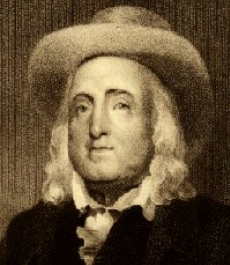
Email: derinadetosoye@gmail.com
Total Article : 11
About Me:I am a student at sixth-form currently studying Economics, Biology & Philosophy and Ethics. My articles are mainly focused on Philosophy and explores the different approaches to ethics. They are written in a way which can be used for revision purposes.

I’m sure you’ve heard the phrase “the greatest happiness for the greatest number” before, right? This principle is actually known as Utilitarianism – an ethical theory in normative ethics which can be applied to moral decision making and states that an action is morally right if it produces the greatest happiness for the majority. It is also a teleological argument, the word ‘telos’ meaning ‘end’ in Greek establishing that Utilitarianism is concerned with the end result of an action, rather than deontological ethics which is concerned with the nature of the act itself. This means that a Utilitarian would argue that no type of act is inherently wrong – not even murder – it depends on the result of the act.
Utilitarianism was initially developed by philosopher Jeremy Bentham (1748-1832), who believed that “nature placed human under the governance of two sovereign masters: pleasure and pain” and thus it is in our best interests to maximise pleasure and minimise pain. In order to do so, Bentham founded a strand of Utilitarianism known as Act Utilitarianism which is a quantitative approach concerned with fulfilling the interests of the “the greatest number” – or in other words, follows the democratic ‘majority rules’ principle.

In order to calculate which action will produce the greatest happiness for the greatest number, Bentham devised the Hedonic Calculus. The Hedonic Calculus can be used to calculate how much pleasure an action will potentially produce using 7 criteria. The Hedonic Calculus consists of the criteria of intensity, duration, certainty, propinquity, fecundity, purity and extent. The action which fulfils these criteria to the greatest extent is the one which should be taken, according to Bentham’s Act Utilitarianism. This is illustrated clearly in the example proposed by Vardy and Grosch of a woman who finds out she’s pregnant but had been planning on going on a skiing trip. On the one hand, she could abort her child and go skiing which would provide her short, temporary happiness, but on the other hand if she chooses to not go on the trip and have a baby instead, it assumed that the long-lasting happiness that the child will provide will override the short-term disappointment of not being able to go on the trip. Thus this example highlights the significance of applying the ‘Extent’ criterion of the Hedonic Calculus.
However, whilst the example put forward by Vardy and Grosch highlights the simple, applicable nature of the Hedonic Calculus used as a calculation for Act Utilitarianism, it will become clear through this next example the complications of the theory. Let’s say there a group of sadists, who derive pleasure from hurting others and want to torture an innocent person. Act Utilitarianism would argue that since torturing that innocent person would provide the greatest amount of pleasure for the majority group (which happen to be the sadistic people), then that act is the one which should be taken… Yet is instantly clear that something isn’t right here and this simple example is revealing that the teleological nature of Act Utilitarianism completely disregards the moral or deontological nature of the act itself which makes it potentially very dangerous in circumstances like such.
So how do we overcome this problem? A philosopher named John Stuart (J.S) Mill acknowledged this fundamental issue and tackled it by developing another strand of Utilitarianism known as Rule Utilitarianism which you can read more about in my article exploring both Rule and Preference Utilitarianism.

0 Comment:
Be the first one to comment on this article.